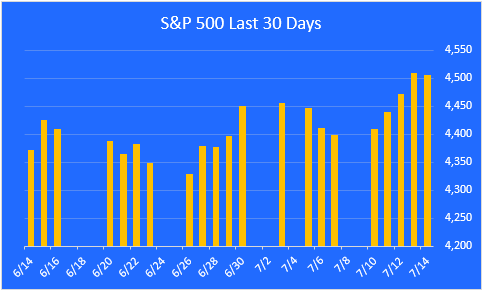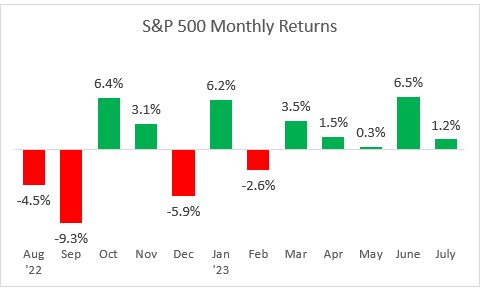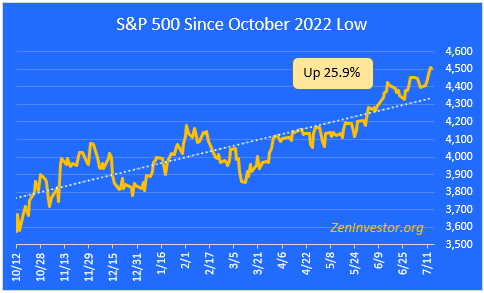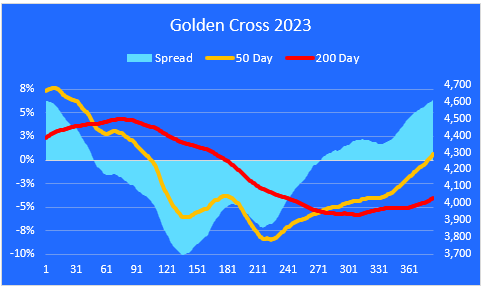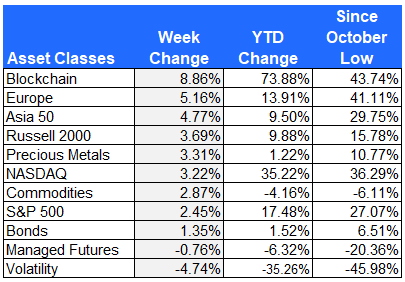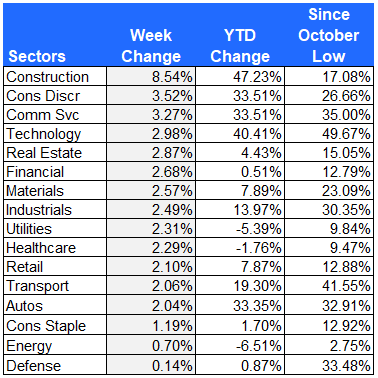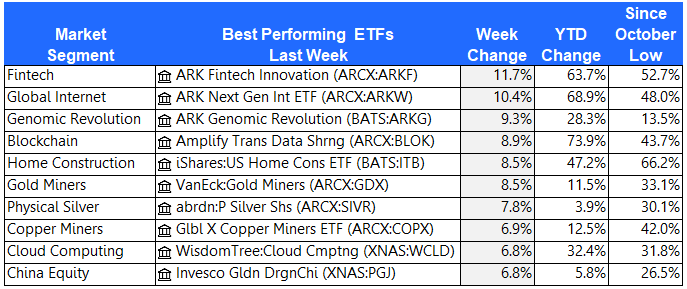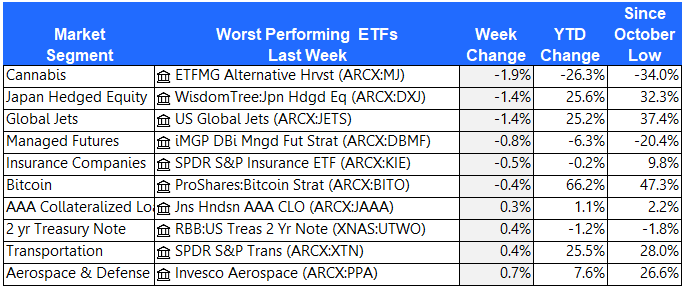In today's issue of the 1-Minute Market Report I examine the asset classes, sectors, equity groups, and ETFs that led the market higher last week, and which market segments bucked the trend by moving lower.
By keeping an eye on the leaders and laggards, we can get a sense of where the big money is going, and where it's coming from. Signs that market participation is beginning to broaden out are continuing to show up in the data. If this trend continues, it will improve the durability of the rally. Details to follow.
The S&P 500 rally continues.
July flips from red to green.
This chart shows the monthly returns for the past year. After a brief pullback last week, July is now back in positive territory. Good news on the inflation front has bolstered the case for an end to the Fed's rate hiking cycle.
The bull market is alive and well.
This chart highlights the 25.9% gain in the S&P 500 from the October 2022 low through Friday's close. The index is now just 6.1% below its record high close on January 3, 2022.
The Golden Cross.
The market entered a Death Cross configuration (a Death Cross occurs when the 50 day moving average crosses below the 200 day) on March 14, 2022. The Death Cross ended on February 2, 2023. We are now in a Golden Cross configuration, with the 50 day above the 200 day. The spread between these two moving averages is widening.
Major asset class performance.
Here is a look at the performance of the major asset classes, sorted by last week's returns. I also included the year-to-date returns as well as the returns since the October 12, 2022 low for additional context.
The best performer last week (and the two weeks before) was the EQM Blockchain Index, which is designed to measure the performance of global companies actively involved in the development and implementation of blockchain technologies. The diversified range of companies includes those engaged in blockchain applications, digital asset mining, cryptocurrency exchanges, blockchain-enabled financial services, and other related activities.
The worst performing asset class last week was Volatility. As the rally continues, there is a sense of calm among options traders. When options traders are calm, options premiums contract, which drives the VIX index lower.
Equity sector performance
For this report I use the expanded sectors as published by Zacks. They use 16 sectors rather than the standard 11. This gives us added granularity as we survey the winners and losers.
Home construction led the way higher last week, and is leading all other sectors on a year-to-date basis. As mortgage rates have risen along with other rates, homeowners are more reluctant to sell, especially those with fixed rates that are lower than current market rates. This has created a shortage of existing homes and increased demand for new construction.
Discretionary spending continues to increase as demand for leisure, travel, and entertainment services remains strong in the post-Covid era.
Equity group performance
For the groups, I separate the stocks in the S&P 1500 Composite Index by shared characteristics like growth, value, size, cyclical, defensive, and domestic vs. foreign.
Foreign Developed markets led the way higher last week. After taking a brief rest, the S&P Top 7 has rebounded over the last two weeks.
In a healthy sign for the market, small and mid caps continue to make up ground vs. large caps.
The 10 best performing ETFs from last week
The 10 worst performing ETFs from last week
Final thoughts
The market made a new high for 2023 on Thursday. Investors were encouraged by the 3% inflation print, and they went looking for bargains in small and mid cap stocks that have lagged the larger caps during this powerful rally.
So far, we are seeing the best case scenario playing out, where the former laggards are coming back to life and the mega cap techs are holding their gains. Now that earnings season is upon us, we will find out whether the bearish crowd was right when they predicted a big market decline. The narrative has been that the full impact of rate hikes and tighter monetary policy, coupled with constrained bank lending, will lead to a disappointing earnings season. I am not in that camp.
What does bother me, however, is the elevated market P/E ratio and other signs that the market is approaching overbought territory. That's why I have been expecting a pullback of perhaps 5-7% on the S%P 500. I am not expecting the "big drop" that the financial media seems to be obsessed with.
There are plenty of bargains out there, especially in lagging sectors like REITs, Energy, and Healthcare. Get your buy list ready, and let the market come to you.

